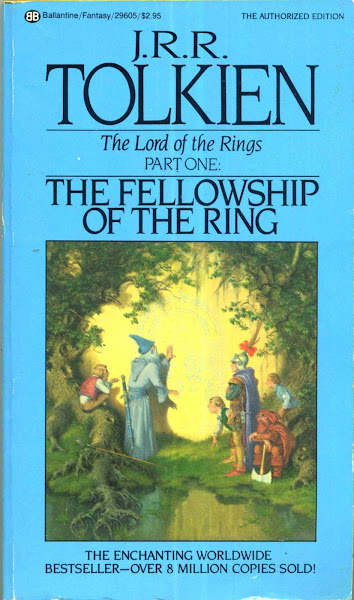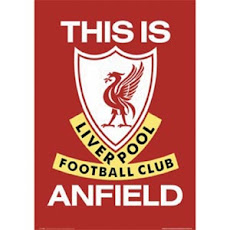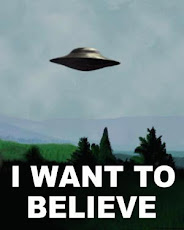An unexpected but
welcome championship
Ateneo bags an unlikely UAAP football title
A season has many images. When a team wins, the image
most often associated with it is when the players lift the trophy amidst a
cacophony of emotions.
My memory of this season begins with the second round
match against FEU.
The Tamaraws went ahead in the 12th minute
of play when striker Eric Giganto fired a thunderous shot that beat Ateneo
keeper Nick O’Donnell for the first time all season. FEU rejoiced. Revenge for
their first round loss seemed at hand.
However, once the second half began, Ateneo took over
as they began to outplay the talented Tams. The problem was in the finishing.
The two teams have much history for the core of both
squads battled for several years in the juniors ranks. Both claimed a pair of titles
off each other. There’s respect and a dash of animosity. But in this match, it
was the latter than reared its ugly head as the game turned more physical.
Ateneo lost its previous match; it’s one and only
loss for the entire season to La Salle, 2-nil. And a second consecutive loss
would be costly as it would drop them further in the standings.
With time running out, freshman Carlo Liay headed in
a cross by Mikko Mabanag that found the back of the net. It was an 89th
minute miracle. And the Blue Booters went on to salvage a hard earned 1-1 draw
that kept them atop the standings.
As soon as the final whistle blew, defender Luis
Mendoza ran onto the pitch and tugged on his shirt to emphasize the “Ateneo”
emblazoned in front. “Hindi kayo mananalo sa amin,” yelled Mendoza after the
contentious and heated contest.
All season long I wondered if Ateneo could win it
all? That confirmed it. What kind of men are these to dare the favorites? The
passing machine and joga bonito-style side known as the FEU Tamaraws? Are they
mad? Yet even so they also must be good.
Somehow not too long ago that didn’t seem so.
Flash back to Season 74, the Blue Booters finished
second to the last. Somewhat better than the previous year where they were dead
last in the standings. It was the first and only time Ateneo had fallen to the
cellar since the school transferred to the UAAP in 1978.
In Season 74, the team oft lost in the final 10-15
minutes of play. Oh, they were a tough team to beat all right.
The highlight of that season were its two wins over
La Salle, a much better and deeper squad. If anything, it said something of
their promise.
When Nick O’Donnell, Carlo Liay, Val Calvo joined the
their fellow freshmen in Eric Figueroa, Chris Sumulong, Emilio Pelaez (from the
Ateneo High School), Armand Gozali and John Christopher Aw Young from Xavier, I
got excited and felt that we had a young and talented team. But it frightened
me too because in many ways, it reminded me of the composition of the 2008 Blue
Booters team that lost to FEU in the finals.
That 2008 team had a stud goalkeeper in RS Mantos,
the Rookie of the Year in Migs Tuazon, backup keeper Yu Murayama, scoring sensation
Gerard Cancio, and veterans Pat Ozaeta, Alvin Perez, and Gino Tongson. There
were a lot of youngsters and a few vets. In Game 2 of the finals, the pressure
got to them and the Tamaraws won that pivotal match.
My indelible image of that game was team captain Pat
Ozaeta gathering his fallen and grieving teammates. “Get up, guys,” Ozaeta
firmly commanded. “Atenista tayo. Let’s take this like men.”
When Ateneo figured in a scoreless draw with UE to
start Season 75, they looked promising. They held the ball, dominated
possession, and had scoring opportunities. But that’s UE, the devil’s advocate
in me said.
Now when they beat UP, 1-0, in their first round
encounter and FEU by the same scoreline, I began to feel good about our
chances.
Incredibly, they kept winning. No matter if the
scorelines were 1-0. They were collecting the three full points available. Liay
began to play better. Calvo was a scoring revelation. The defense was a tough
nut to crack.
Ah, the defense. I remember Enzo Bonoan’s freshman
year. He was in and out of the lineup as he looked soft and inconsistent. Not
this year. He was solid on the right back position.
And there was Mikko Mabanag. Time was he was too
feisty for his own good. Always getting into fights. I have been mentoring
Mabanag since his fourth year in high school all the way to the NCR U-23 team
he made. The kid had talent but lacked the composure to become the true wizard
he is in the midfield. I had seen him in high school and he was a talent. The
trick was to help him rein in those emotions and become a better leader on and
off the pitch.
I included him in the Clear Dream Match that was held
at the University of Makati last year. In that match, he was named the “Best
Midfielder”.
The way he raided opposing midfielders, set up plays,
made those crosses, and helped out on defense has been a massive advantage for
Ateneo. The only other player who did the same thing for their team was FEU’s
Arnel Amita.
After dusting off La Salle in a penalty shootout,
there was one team left – the University of the Philippines Fighting Maroons;
winners of three titles in the last four seasons. If Ateneo wanted to be
champions, they had to go through the champs.
In one of those weird déjà vu moments with the 2008
season, I remember UP making noises about finally having a team that could
compete for a title. They had Stephen Permanes, Allan Serna, Deo Segunial,
Andoni Santos, Nacho Mendezona, Andrei Mercader, Jay Eusebio, Nathan Octavio,
and Jed Rances to name a few.
In the second round, Ateneo got back at the Fighting
Maroons with some players saying that this wasn’t their time.
Well it wasn’t for UP just yet but it wasn’t for
Ateneo either that season.
And this season you had Ateneo players yapping at FEU
that it wasn’t their time yet. Could this be the time of the blue and white?
Despite the graduation of much of its title core over
the years, UP still was a terrific football team. They had an up-and-coming
keeper in Ace Villanueva and old reliable Ty Caballes who once backstopped for
Ateneo. They had the bullstrong Daniel Gadia, the speedy Michael Simms, the
slippery Albert Yatco, and veterans Valmayor, Segunial, Fernandez, and company.
And on the bench were to of the brightest tacticians in local football – Anto
Gonzales and Frank Muescan.
In their trophy case are 16 gleaming UAAP football
trophies. They are one of the best footballing schools in the country.
Ateneo has 11 football titles. Six in the NCAA: 1924,
1941, 1951, 1953, 1954, and 1967; and five in the UAAP: 1996, 1999, 2004, 2005,
and 2006.
The last time both teams met in the UAAP Finals was
in 2004 where the Blue Booters piped the Ariel Zerrudo-led squad.
UP has their fearsome striker in Jinggoy Valmayor.
Ateneo has no striker. None. Zip. Nada. All season
long we played without a natural striker.
UP has its national players in Valmayor, Raymark
Fernandez, and Deo Segunial.
Ateneo has none. Their only players with UFL
experience were Jacobo Lorenzo who was on Kaya’s bench a year ago and Nick O'Donnell who had gotten a little playing time with Loyola two years ago.
In Game One, the Blue Booters were obviously nervous.
They were slow, they missed their spots, and couldn’t really control the ball.
They conceded a first half goal to Vincent Aguilar.
I noted that even in the
first half, Ateneo made all its runs on the right side of their field (the
Maroons’ left). UP was funneling the Blue Booters to the left where their
defense in the middle and the back was stronger. Once the ball got there, they trapped the ball carrier and went on the counter. I passed on the notes to Greg Madrona, the Ateneo's goalkeeping coach, who in turn in he gave to head coach JP Merida who was making adjustments on the midfield and on defense.
In the second half, part of the Ateneo coaching staff's game plan was to continue the assault
on UP's weaker right side. The substitutes for Ateneo – Chris Sumulong and Luis Mendoza
– were impact subs and it was the former who launched the cross – from the
right side – that Yu Murayama headed in. Yu's header sent the match into extra period and into penalties where the Blue Booters pulled out another rabbit.
In Game Two, Valmayor was back after missing the
first match. However, their top rookie, Daniel Gadia, was out on account of two yellow cards. But so
was Ateneo's Jico Noel who was a bedrock at the back four.
Basically, the team had to make a stand now. A Game
Three would be disastrous. Six players had yellow cards. There was no telling
how the officiating would go and if any would be docked another card as well. A loss would give UP the momentum and they would surely use their championship experience to the hilt.
I sent a message to Merida (with his permission), Mabanag,
and Bonoan with an idea on stopping UP. I always thought that one of their
problems offensively this season was putting Michael Simms in a holding
position. I thought the previous year, he was electric on the wing. Placing him
in the back deprived UP of that speed on the flanks.
Having watched almost all of UP’s matches this
season, I thought they fell into a predictable pattern. Simms and Nathan De
Guzman would move up and force the midfield to confront them. That would open
up some space then they would launch those long balls in Valmayor’s direction.
The idea was to stop those two from sending those
long balls and to force them to put the ball on the ground; something they were
not adept at I felt all season long. They preferred to led Gadia or De Guzman
run up. Not having Gadia was huge. He was like Valmayor; knowing how to use his
body on the turn before firing.
They weren’t really a team that liked to build up
their attack from the back unlike Ateneo. If the Maroons could be forced to put
the ball on the ground then players like Mabanag, Calvo, and Figueroa with
their pesky defending could strip them of the ball and go on a quick counter.
And it worked. Ateneo had a lot more dangerous runs
inside but couldn’t score.
At the start of the match I also noticed that two
physical therapists were working on Valmayor’s leg. Maybe he wasn’t 100%, I
thought to myself and relayed the message to the coaches. And true enough, he
didn’t seem to have that speed.
That meant he would conserve himself and pick his
spots to run. Just do not give him space where he could hurt us.
If UP was expecting Ateneo to attack from the right,
this time, they did the reverse. They attacked the left side with better
support. They had plenty of scoring opportunities on this side but still
couldn’t finish.
By the extra period, the team was running on fumes.
It was as if they were just waiting to send the match into a penalty shootout. The
team was quite confident of their chances there. After all, they had won their
last two shootouts and they had a safety net in goalkeeper Nick O'Donnell who was undoubtedly the top keeper in the league.
And so it went to another shootout.
Eric Figueroa sent Ty Caballes the wrong way and a
1-0 Ateneo lead.
As for UP, I was surprised when it was Evan Mendoza
who went to take the first spot kick.
The first thing that came to my mind when it wasn’t
Valmayor who took the first penalty shot was Cristiano Ronaldo not getting a
chance to shoot against Spain in the last World Cup. Don’t you want to start a
little sure footed?
Mendoza had come in late in the extra period. But who
knows? Maybe he was fully confident. Except that he scuffed his shot and it
went wide setting the tone for the Maroons.
Caballes trooped to the goal with his shoulders
hunched. The body language said it all.
Calvo also sent Caballes the wrong way and now it was
2-0, Ateneo.
Then it was Raymark Fernandez’ turn but O’Donnell
parried it away. The Maroons were now in trouble.
Caballes guessed right for Mabanag’s shot but the
ball was high and in; 3-nil Ateneo.
Finally, Valmayor took his spot kick and he buried
it; 3-1 still Ateneo. But there was no show of emotion.
Liay sent his shot way up high and suddenly there was
a glimmer of hope for UP.
Fe Baya caught O’Donnell looking with his shot and it
was 3-2. Now it was up to team captain Yu Murayama to end a six-year title
drought.
His shot was similar to Mabanag’s – to the keeper’s
right but high. Caballes flailed at the ball but it was gone.
Ateneo had done the improbable. They had won three
consecutive penalty shootouts –one against La Salle and two against UP to annex
their sixth UAAP Men’s Football Championship.
It was a most unexpected but welcome title
considering that the team was never mentioned as a pre-season contender.
But they showed a lot of heart and resiliency. They
conceded the fewest goals all season long – four. They had beaten every team in
the league.
And now... they were champions.
After Migs Tuazon’s bittersweet 2008 season and the
succeeding years where the team floundered, he thought of giving up. But former
Ateneo captain Gab Siojo told him to keep on trucking because before his time
would be done, he would win a UAAP title. “I held Gab to his promise,” said a tearful
Tuazon who hugged Siojo post-match.
Mabanag also was in tears. After his senior year in
high school where the juniors team lost to FEU, he thought about not playing in
college. But the youngster persevered and now he had a title to go with the one
he won in high school.
Murayama was another unlikely hero in the most
unlikely of seasons. After tending the nets in the second round La Salle match
that Ateneo lost, he was pulled out after the second goal. Yu was in tears as
he sat on the bench.
In Season 74, he played a field position as Joel
Faustino was the starting keeper. In the second round match against the Green
Archers, Faustino got injured and Murayama put on the goalkeeper’s gloves. He
went on to stop a barrage of shots that preserved a win for Ateneo; one of
three wins for the tournament.
In the penalty shooutout against La Salle in the
semifinals, Murayama missed his spot kick. Yet in the Game One shooutout
against UP, Merida kept him in. He repaid his coach’s faith with a
match-winning penalty.
Val Calvo buried his father not too long ago. There’s
been a void left behind but he still kept trucking. “I know that he is cheering
for me up there,” he said with red eyes.
JP Merida took on a team that was fractured. There
wasn’t one practice where this player fought that player. There were people who
didn’t like one another on the team. It was that bad. But Merida slogged on. He
reminded them every single day that the only one who can help them on the pitch
was their teammate. He worked on players and got them to believe.
The result is the first time since 1941 that Ateneo
bagged the men’s basketball and men’s football titles in one season. And Merida
is the first Atenean to win a football title as a player and as a coach.
As the celebrating crowds thinned out. There was an
unobtrusive reunions of sorts on the pitch. They were the two men who
collectively led Ateneo to the three-peat of 2004-06 and the 2013 championship.
Arnulfo “Ompong” Merida and his nephew JP posed with
the trophy. “Magaling si JP,” said the elder Merida. “Sana start ito ng
panibagong championship run.”
The two walked towards the bench arm in arm.
And maybe that’s the best image to remember this
championship season.
 |
| Ompong and JP Merida: the last two men to lead Ateneo to a series of football championships. God bless you both! |
For the 2013 Ateneo Men's Football Team and the teams of 2008-12.
----------------------------
In 1941, Ateneo won the NCAA Football Championship
when Simon La’O scored the game winning goal in the dying seconds of the game
against La Salle. The La Salle keeper at that time was Louie Javellana who
would later transfer to Ateneo and win a title with Spanish coach Teo Erenchun
at the helm. The day after Ateneo won the ’41 NCAA title, the Japanese bombed
the Philippines signaling the start of the Pacific War.
With the Blue Booters right before Game One.
Giving the Ateneo side a pep talk.
I had good teachers - Chris Monfort and Bert Honasan. Thanks for teaching me the game.
Much respect to Anto Gonzales, Frank Muescan and John Gutierrez. UP Fight!
















